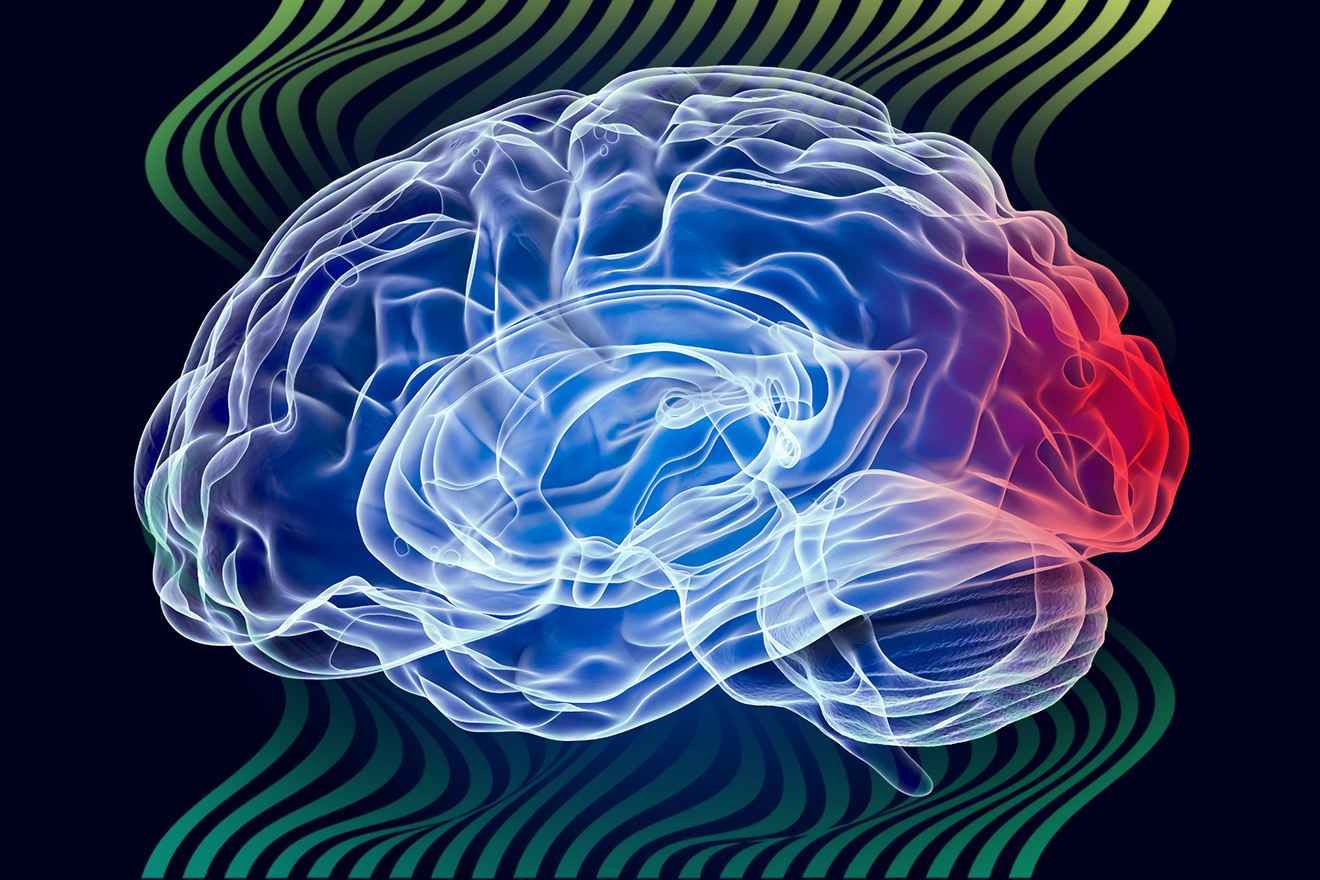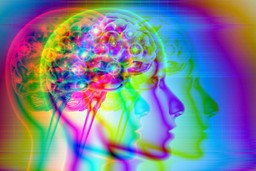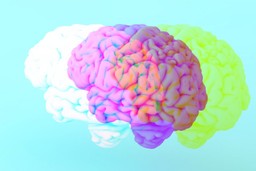Traumatic brain injuries (TBI) can alter personality and lead to problems with addiction and depression. Traumatic brain injuries create irreparable damage to tissue and neurons that no present treatment can address. Could psychedelics become the life-changing treatment option for individuals affected by TBIs? Let’s talk about the current evidence and future directions for psychedelic therapy for traumatic brain injuries.
Traumatic brain injuries happen after someone takes a blow to the head or face. They can be closed (meaning that the skull remains intact) or open (penetrating the skull and brain tissue). But even if a head injury isn’t noticeable from the outside, TBIs can affect cognition, emotions, and personality.
Follow your Curiosity
Sign up to receive our free psychedelic courses, 45 page eBook, and special offers delivered to your inbox.Outward injuries to the head or face don’t compare to the long-term internal effects of TBIs. Brain injuries can lead to progressive degenerative changes in brain tissue. This is called chronic traumatic encephalopathy (CTE), where areas of the brain literally waste away. Over time, CTE can cause:
- Short-term memory loss
- Mood swings
- Depression
- Anxiety
- Agitation
These changes can accelerate brain aging, and could even be a precursor to Alzheimer’s disease1.
For a long time, the only way to treat TBIs has been to prevent them. Could psychedelic therapy for traumatic brain injuries change that? With new studies coming to light, research in psychedelic therapy continues to expand our ideas of what these substances can provide.
At Psychedelic Support, we help educate therapists so that they can better serve patients through psychedelic integration. If you’re interested in therapy for yourself, check out our growing network of providers. Check out our works discussing trends, research, and innovations happening in the psychedelic space on our articles page.
We talk a lot about psychedelic therapy for depression, anxiety, and other mental health problems. We even talk about psychedelics for self-growth. But could they be helpful for people with brain damage? Let’s talk about who is most affected by TBIs, and how to look out for them in your patients.
Who Is Most at Risk for Traumatic Brain Injuries?
When you think about TBIs, you might picture sports players. If you watch football, you’ve probably even seen a player hit their head more than once. Head injuries are so common in football that a report found 87% of deceased former football players had signs of traumatic brain injuries2.
These populations have more risk factors for traumatic brain injuries3:
- Athletes, specifically those who play contact sports
- Adults over 65 are at greatest risk for TBIs, and are most likely to be hospitalized or die due to their injury
- Newborns – 4-year-olds
- Young adults between the ages of 15 to 24
- Males in any age group
- People who have had a brain injury in the past4
While these groups are more at risk, TBIs don’t discriminate, and they can be hard to detect if you don’t know what you’re looking for. Let’s talk about symptoms to look for in your patients.
Detecting Brain Trauma in Patients
Despite years of study, there’s still no test to detect TBIs. Imaging exams can’t always detect brain trauma5. These injuries are typically diagnosed with a neurological exam once symptoms have already arisen.
Since many of the symptoms relate to mental health, a therapist may be the first to observe about these signs. You can help your patients by looking out for symptoms and making referrals where appropriate. Here are some symptoms of mild traumatic brain injuries.
Symptoms of Mild TBIs
- Headache
- Nausea & Vomiting
- Fatigue & Drowsiness
- Speech Problems
- Dizziness or Vertigo
- Blurred Vision
- Ear Ringing
- Light Sensitivity
- Problems with Concentration
- Memory Loss
- Irregular Sleep Patterns
- Mood Swings
Other mental health diagnoses may result from a TBI. Substance use disorder has been associated with previous brain damage6. TBIs have been shown to increase the risk of depression as well7. Screening patients for head injuries may help shed light on potential roots for these symptoms.
Even after brain injury is detected, there’s no current best-practice treatment for patients with TBIs. How might psychedelics help people to recover from neurological injuries?
Using Psychedelics to Treat Traumatic Brain Injuries: Current Research
Psychedelics create out-of-body experiences, spiritual “aha” moments, and even breakthroughs after trauma. They also spur physiological brain changes that may explain why their effects are so lasting. Psychedelic therapy for traumatic brain injuries could be a vital treatment in the future. Here are the ways psychedelic therapy for traumatic brain injuries could help heal people8:
- Decreasing Brain Inflammation
Long-term TBI symptoms don’t result from the initial injury but from brain inflammation afterward. This inflammation is sometimes called secondary injury for this reason. Limiting post-injury inflammation may be the best way to mitigate the effects of TBIs. But up to this point, there haven’t been any successful drug trials to do this9.
Classic psychedelics work on serotonin receptors, which modulate inflammation. They also suppress cytokine inflammatory cells10. By limiting inflammation, psychedelics may allow for more blood flow to injured areas, encouraging tissue healing after injury. In animal trials, DMT has been shown to reduce brain injury resulting from artery occlusion11.
- Boosting Neuroplasticity
Neuroplasticity is our brain’s way of adapting, modifying, or changing. We create neuroplasticity in our brains when we learn or try something new. Neuroplasticity helps us recover from brain injuries by moving specific functions to uninjured regions. For instance, people can re-learn how to speak, write, or walk after a stroke because of neuroplasticity.
Recent trials have shown that psychedelic therapy for traumatic brain injuires helps promote neuroplasticity in brain structure and function. They’re thought to do this through increasing Brain-Derived Neurotrophic Factor. This may be why some psychedelics have been so effective for treatment-resistant mental health problems.
Psilocybin has already been used in one case report on a patient with phantom-limb-associated pain. Combined with mirror therapy, psilocybin therapy was thought to help the brain “unlearn” pathways because of its effect on neuroplasticity. More trials using psilocybin on phantom limb pain are underway12.
- Growing Neurons in the Hippocampus
In animal trials, TBIs slow neural growth in the hippocampus. This area is associated with memory and learning, and damage is implicated in several neuropsychiatric disorders13. New cell growth in this region is thought to be vital for recovery after injury. Hippocampal growth after TBI helps patients improve depression, memory, and other impairments14.
Low doses of psilocybin have increased hippocampal neurogenesis in rats. High doses, administered weekly, have also been associated with hippocampal growth15. This exciting area of research needs more exploration, but it’s promising.
- Increasing Complexity in the Brain
When the brain’s ability to maintain consciousness is damaged, this is sometimes called Disorders of Consciousness (DOCs). This can happen after trauma and strokes. Increases in tissue activity and complexity may help the brain recover from DOCs.
Some researchers posit that psilocybin may do this by boosting Lempel-Ziv (LZC) complexity. LZC is a measure of complexity shown in brain patterns and how quickly they happen. Boosts in LZC are thought to coincide with higher levels of consciousness and perception. This may be linked to psilocybin’s ability to add “richness of conscious experience.”16 Increases in brain complexity have also been observed in EEG and fMRI studies17.
People with TBIs have few options in current medicine. The only treatment we have right now is prevention, however; psychedelics could help decrease brain inflammation, increase neuroplasticity and complexity, and even grow new neurons.
The Future of Psychedelics for Traumatic Brain Injuries
TBIs represent major gaps in not only research but treatment interventions. They’re not only difficult to find, but there are no existing treatment options for patients who are diagnosed. The only treatments we can offer are symptomatic: SSRIs for depression and anxiety, counseling for anger management, etc. These patients deserve better.
Psychedelic therapy for traumatic brain injuries may present a new frontier in post-TBI care, but the current research isn’t enough to back up evidence-based models for treatment yet. Most trials have been on non-injured brains or animals. while these have been encouraging, we have to approach TBIs with caution. We certainly don’t want to make these patients worse.
The good news is that clinical trials are underway as we speak. More research on these substances is coming out nearly every day. And when it does, you’ll hear about it here at Psychedelic Support.
Are you interested in learning more about psychedelics for non-mental health diagnoses? Read our blog on treating autoimmune diseases with psychedelics. You can also sign up for updates on our articles, speaker series, and fresh courses when you sign up for our newsletter. With updates in your inbox weekly, you’ll never miss a psychedelic beat.
References
- Turner RC, Lucke-Wold BP, Robson MJ, Lee JM, Bailes JE. Alzheimer’s disease and chronic traumatic encephalopathy: Distinct but possibly overlapping disease entities. Brain Inj. 2016;30(11):1279-1292. doi: 10.1080/02699052.2016.1193631. Epub 2016 Aug 11. PMID: 27715315; PMCID: PMC5303562.
- Mez J, Daneshvar DH, Kiernan PT, et al. Clinicopathological Evaluation of Chronic Traumatic Encephalopathy in Players of American Football. JAMA. 2017;318(4):360–370. doi:10.1001/jama.2017.8334
- Mayo Foundation for Medical Education and Research. (2021, February 4). Traumatic brain injury. Mayo Clinic. Retrieved October 7, 2022, from https://www.mayoclinic.org/diseases-conditions/traumatic-brain-injury/symptoms-causes/syc-20378557
- Rao V, Rosenberg P, Bertrand M, Salehinia S, Spiro J, Vaishnavi S, Rastogi P, Noll K, Schretlen DJ, Brandt J, Cornwell E, Makley M, Miles QS. Aggression after traumatic brain injury: prevalence and correlates. J Neuropsychiatry Clin Neurosci. 2009 Fall;21(4):420-9. doi: 10.1176/jnp.2009.21.4.420.
- Commissioner, O. of the. (n.d.). Traumatic brain injury: What to know. U.S. Food and Drug Administration. Retrieved October 7, 2022, from https://www.fda.gov/consumers/consumer-updates/traumatic-brain-injury-what-know-about-symptoms-diagnosis-and-treatment#
- Olsen, C. M.; Corrigan, J. D. (2022). Does traumatic brain injury cause risky substance use or substance use disorder? Biological Psychiatry, 91(5), 421–437. https://doi.org/10.1016/j.biopsych.2021.07.013
- Conroy, S. K., Brownlowe, K. B., & McAllister, T. W. (2020). Depression comorbid with stroke, traumatic brain injury, parkinson’s disease, and multiple sclerosis: Diagnosis and treatment. FOCUS, 18(2), 150–161. https://doi.org/10.1176/appi.focus.20200004
- Khan SM, Carter GT, Aggarwal SK, Holland J. Psychedelics for Brain Injury: A Mini-Review. Front Neurol. 2021 Jul 29;12:685085. doi: 10.3389/fneur.2021.685085. Erratum in: Front Neurol. 2021 Sep 30;12:772692. PMID: 34393973; PMCID: PMC8357986.
- Xiong Y, Mahmood A, Chopp M. Current understanding of neuroinflammation after traumatic brain injury and cell-based therapeutic opportunities. Chin J Traumatol. 2018 Jun;21(3):137-151. doi: 10.1016/j.cjtee.2018.02.003. Epub 2018 Apr 24. PMID: 29764704; PMCID: PMC6034172.
- Szabo, A. (2015). Psychedelics and immunomodulation: Novel approaches and therapeutic opportunities. Frontiers in Immunology, 6. https://doi.org/10.3389/fimmu.2015.00358
- Nardai S, László M, Szabó A, Alpár A, Hanics J, Zahola P, Merkely B, Frecska E, Nagy Z. N,N-dimethyltryptamine reduces infarct size and improves functional recovery following transient focal brain ischemia in rats. Exp Neurol. 2020 May;327:113245. doi: 10.1016/j.expneurol.2020.113245. Epub 2020 Feb 14. PMID: 32067950.
- Ramachandran V, Chunharas C, Marcus Z, Furnish T, Lin A. Relief from intractable phantom pain by combining psilocybin and mirror visual-feedback (MVF). Neurocase. 2018 Apr;24(2):105-110. doi: 10.1080/13554794.2018.1468469. Epub 2018 May 15. PMID: 29764303.
- Anand KS, Dhikav V. Hippocampus in health and disease: An overview. Ann Indian Acad Neurol. 2012 Oct;15(4):239-46. doi: 10.4103/0972-2327.104323. PMID: 23349586; PMCID: PMC3548359.
- Ngwenya LB, Danzer SC. Impact of Traumatic Brain Injury on Neurogenesis. Front Neurosci. 2019 Jan 9;12:1014. doi: 10.3389/fnins.2018.01014. PMID: 30686980; PMCID: PMC6333744.
- Catlow BJ, Song S, Paredes DA, Kirstein CL, Sanchez-Ramos J. Effects of psilocybin on hippocampal neurogenesis and extinction of trace fear conditioning. Exp Brain Res. 2013 Aug;228(4):481-91. doi: 10.1007/s00221-013-3579-0. Epub 2013 Jun 2. PMID: 23727882.
- Scott G, Carhart-Harris RL. Psychedelics as a treatment for disorders of consciousness. Neurosci Conscious. 2019 Apr 21;2019(1):niz003. doi: 10.1093/nc/niz003. PMID: 31024740; PMCID: PMC6475593.
- Carhart-Harris RL. The entropic brain – revisited. Neuropharmacology. 2018 Nov;142:167-178. doi: 10.1016/j.neuropharm.2018.03.010. Epub 2018 Mar 14. PMID: 29548884.








